Martin A Richardson
age ~57
from Omaha, NE
- Also known as:
-
- Martin Y Richardson
- Martin A Yanez
- Yanez Richardson Martin
Martin Richardson Phones & Addresses
- Omaha, NE
- Orlando, FL
- Tamarac, FL
- Fort Myers, FL
Resumes

Martin Richardson
view sourceLocation:
United States
Work:
Container Centralen A/S 2010 - 2010
Sales adm. Manager
Sales adm. Manager

Professor At Ucf
view sourcePosition:
Professor at UCF
Location:
Orlando, Florida Area
Industry:
Research
Work:
UCF
Professor
Professor

Martin Richardson
view sourceLocation:
United States
License Records
Martin A. Richardson
License #:
="15250" - Active
Issued Date:
May 25, 1994
Renew Date:
Dec 1, 2015
Expiration Date:
Nov 30, 2017
Type:
Certified Public Accountant
Us Patents
-
Laser Plasma Source For Extreme Ultraviolet Lithography Using A Water Droplet Target
view source -
US Patent:6377651, Apr 23, 2002
-
Filed:Oct 10, 2000
-
Appl. No.:09/685291
-
Inventors:Martin Richardson - Geneva FL
Guido Shriever - Göttingen, DE -
Assignee:University of Central Florida - Orlando FL
-
International Classification:G21K 500
-
US Classification:378 34, 378119
-
Abstract:A laser produced extreme ultraviolet (EUV) source based on a water droplet target has been implemented an auxiliary electrode system between the source and the first collector mirror. The auxiliary electrode system creates a repeller electric field, possibly a dc voltage imposed on the mirror that slows down and reverses the trajectories of ions from the source before they impact the collection mirror. The source modified according to the invention was evaluated with respect to the demands of EUV lithography and found to have much extended operational lifetimes. The spectral distribution of the generated radiation as well as the conversion efficiency into line radiation at 13 nm was determined. Long time measurements of the reflectivity of silicon/molybdenum multilayer mirrors for up to from 10 to 10 shots show the useful influence of the treatment of ions emitted from the source. Several methods of debris reduction were tested and discussed.
-
Euv, Xuv, And X-Ray Wavelength Sources Created From Laser Plasma Produced From Liquid Metal Solutions
view source -
US Patent:6831963, Dec 14, 2004
-
Filed:Jun 14, 2001
-
Appl. No.:09/881620
-
Inventors:Martin Richardson - Geneva FL
-
Assignee:University of Central Florida - Orlando FL
-
International Classification:H01J 3508
-
US Classification:378119, 378143
-
Abstract:Metallic solutions at room temperature used a laser point source target droplets. Using the target metallic solutions results in damage free use to surrounding optical components since no debris are formed. The metallic solutions can produce plasma emissions in the X-rays, XUV, and EUV (extreme ultra violet) spectral ranges of approximately 11. 7 nm and 13 nm. The metallic solutions can include molecular liquids or mixtures of elemental and molecular liquids, such as metallic chloride solutions, metallic bromide solutions, metallic sulphate solutions, metallic nitrate solutions, and organo-metallic solutions. The metallic solutions do not need to be heated since they are in a solution form at room temperatures.
-
Euv, Xuv, And X-Ray Wavelength Sources Created From Laser Plasma Produced From Liquid Metal Solutions, And Nano-Size Particles In Solutions
view source -
US Patent:6862339, Mar 1, 2005
-
Filed:Mar 8, 2004
-
Appl. No.:10/795814
-
Inventors:Martin Richardson - Geneva FL, US
-
Assignee:University of Central Florida - Orlando FL
-
International Classification:H01J035/08
-
US Classification:378119, 378143
-
Abstract:Special liquid droplet targets that are irradiated by a high power laser and are plasmarized to form a point source EUV, XUV and x-ray source. Various types of liquid droplet targets include metallic solutions, and nano-sized particles in solutions having a melting temperature lower than the melting temperature of some or all of the constituent metals, used a laser point source target droplets. The solutions have no damaging debris and can produce plasma emissions in the X-rays, XUV, and EUV(extreme ultra violet) spectral ranges of approximately 0. 1 nm to approximately 100 nm, approximately 11. 7 nm and 13 nm, approximately 0. 5 nm to approximately 1. 5 nm, and approximately 2. 3 nm to approximately 4. 5 nm. The second type of target consists of various types of liquids which contain as a miscible fluid various nano-size particles of different types of metals and non-metal materials.
-
Euv, Xuv, And X-Ray Wavelength Sources Created From Laser Plasma Produced From Liquid Metal Solutions, And Nano-Size Particles In Solutions
view source -
US Patent:6865255, Mar 8, 2005
-
Filed:Oct 19, 2001
-
Appl. No.:10/082658
-
Inventors:Martin Richardson - Geneva FL, US
-
Assignee:University of Central Florida - Orlando FL
-
International Classification:G21G004/00
-
US Classification:378119, 378124, 378143
-
Abstract:Special liquid droplet targets that are irradiated by a high power laser and are plasmarized to form a point source EUV, XUV and x-ray source. Various types of liquid droplet targets include metallic solutions, and nano-sized particles in solutions having a melting temperature lower than the melting temperature of some or all of the constituent metals, used a laser point source target droplets. The solutions have no damaging debris and can produce plasma emissions in the X-rays, XUV, and EUV(extreme ultra violet) spectral ranges of approximately 0. 1 nm to approximately 100 nm, approximately 11. 7 nm and 13 nm, approximately 0. 5 nm to approximately 1. 5 nm, and approximately 2. 3 nm to approximately 4. 5 nm. The second type of target consists of various types of liquids which contain as a miscible fluid various nano-size particles of different types of metals and non-metal materials.
-
Liquid-Jet/Liquid Droplet Initiated Plasma Discharge For Generating Useful Plasma Radiation
view source -
US Patent:6998785, Feb 14, 2006
-
Filed:Jul 12, 2002
-
Appl. No.:10/194387
-
Inventors:William T. Silfvast - St. Helena CA, US
Martin C. Richardson - Geneva FL, US -
Assignee:University of Central Florida Research Foundation, Inc. - Orlando FL
-
International Classification:H01J 7/24
H05B 31/26 -
US Classification:31511171, 31511101, 250504 R, 378119, 31323131, 31323161, 118723 MP
-
Abstract:Plasma discharge sources for generating emissions in the VUV, EUV and X-ray spectral regions. Embodiments can include running a current through liquid jet streams within space to initiate plasma discharges. Additional embodiments can include liquid droplets within the space to initiate plasma discharges. One embodiment can form a substantially cylindrical plasma sheath. Another embodiment can form a substantially conical plasma sheath. Another embodiment can form bright spherical light emission from a cross-over of linear expanding plasmas. All the embodiments can generate light emitting plasmas within a space by applying voltage to electrodes adjacent to the space. All the radiative emissions are characteristic of the materials comprising the liquid jet streams or liquid droplets.
-
Euv, Xuv, And X-Ray Wavelength Sources Created From Laser Plasma Produced From Liquid Metal Solutions
view source -
US Patent:7092488, Aug 15, 2006
-
Filed:Mar 8, 2004
-
Appl. No.:10/795884
-
Inventors:Martin Richardson - Geneva FL, US
-
Assignee:University of Central Florida Research Foundation, Inc. - Orlando FL
-
International Classification:H05G 2/00
-
US Classification:378119, 378143
-
Abstract:Metallic solutions at room temperature used a laser point source target droplets. Using the target metallic solutions results in damage free use to surrounding optical components since no debris are formed. The metallic solutions can produce plasma emissions in the X-rays, XUV, and EUV(extreme ultra violet) spectral ranges of approximately 11. 7 nm and 13 nm. The metallic solutions can include molecular liquids or mixtures of elemental and molecular liquids, such as metallic chloride solutions, metallic bromide solutions, metallic sulphate solutions, metallic nitrate solutions, and organo-metallic solutions. The metallic solutions do not need to be heated since they are in a solution form at room temperatures.
-
Euv, Xuv, And X-Ray Wavelength Sources Created From Laser Plasma Produced From Liquid Metal Solutions
view source -
US Patent:7391851, Jun 24, 2008
-
Filed:Aug 14, 2006
-
Appl. No.:11/503703
-
Inventors:Martin Richardson - Geneva FL, US
-
Assignee:University of Central Florida Research Foundation, Inc. - Orlando FL
-
International Classification:H05G 2/00
-
US Classification:378119, 378124, 378143, 250504 R
-
Abstract:Metallic solutions at room temperature used a laser point source target droplets. Using the target metallic solutions results in damage free use to surrounding optical components since no debris are formed. The metallic solutions can produce plasma emissions in the X-rays, XUV, and EUV(extreme ultra violet) spectral ranges of approximately 11. 7 nm and 13 nm. The metallic solutions can include molecular liquids or mixtures of elemental and molecular liquids, such as metallic chloride solutions, metallic bromide solutions, metallic sulphate solutions, metallic nitrate solutions, and organo-metallic solutions. The metallic solutions do not need to be heated since they are in a solution form at room temperatures.
-
Nanoparticle Seeded Short-Wavelength Discharge Lamps
view source -
US Patent:7492867, Feb 17, 2009
-
Filed:Nov 5, 2004
-
Appl. No.:10/982380
-
Inventors:Martin Richardson - Geneva FL, US
-
Assignee:University of Central Flordia Research Foundation, Inc. - Orlando FL
-
International Classification:H05G 2/00
-
US Classification:378119, 250504 R
-
Abstract:Methods, systems and apparatus for using nanoparticle seeded short-wavelength discharge generator sources discharge sources, for use with X-ray, XUV and EUV light emissions. Applications can include EUV lithography. Additional embodiments can use the generator sources for Hollow Cathode Plasma Discharge (HCPD) lamps, and dense plasma focus (DPF) devices and other sources. Target streams of gases such as Xe and nanoparticles such as tin, copper, or lithium can be heated with laser type sources to emit nano-droplets therefrom.
Isbn (Books And Publications)


Applications of Laser Plasma Radiation: 14-16 July 1993, San Diego, California
view sourceAuthor
Martin C. Richardson
ISBN #
0819412643
Name / Title
Company / Classification
Phones & Addresses
Managing
MR INVESTS, LLC
Investor
Investor
4570 NW Bethel Rd, Bristol, FL 32321
1521 Alton Rd, Miami, FL 33139
301 NE 51 St, Boca Raton, FL 33431
23 Star Is Dr, Miami, FL 33139
1521 Alton Rd, Miami, FL 33139
301 NE 51 St, Boca Raton, FL 33431
23 Star Is Dr, Miami, FL 33139
COMRO ENGINEERING, INC
THE CROSSE TRAINER LLC
MARTIN RICH MEDIA LLC
Financial Systems Consultant
University of California, Los Angeles
University · College/University Administrative Educational Programs · College/University
University · College/University Administrative Educational Programs · College/University
3107942361, 3108258021, 3102065026, 3107942620
Managing
M. RICHARDSON, LLC
523 Vly Strm Dr, Geneva, FL 32732
12201 Research Pkwy, Orlando, FL 32826
12201 Research Pkwy, Orlando, FL 32826
President, Director, Vice President
Canvey Enterprises, Inc
5571 Marquesas Cir, Sarasota, FL 34233
7465 Herricks Loop, Orlando, FL 32835
7465 Herricks Loop, Orlando, FL 32835
Director
Caribbean Cellular, Inc
8401 NW 17 St, Miami, FL 33126
Plaxo

Martin RICHARDSON
view sourceChichesterChief Executive at Law South

Martin Richardson
view sourceLecturer at Lowestoft College

Martin Richardson
view sourceBristol, FL

Martin Richardson
view sourceHarvey Norman

Martin Richardson
view sourceSupport Eng at Siemens Enterprise Communications

Martin Richardson
view sourceAuckland
Classmates

Martin Richardson
view sourceSchools:
Suffolk High School Suffolk VA 1976-1980
Community:
Regina Jeanie, Mary Baines, Ronald Holliman, Tommy Bradshaw

Martin Richardson
view sourceSchools:
Ka'a'awa Elementary School Kaaawa HI 1977-1981
Community:
Daniel Kim, Carol Clark, Denise Boyajian, Elaine Kamanawa, Reagan Snyder

Martin Richardson
view sourceSchools:
Sunset Elementary School La Puente CA 1972-1978, Willow Junior High School La Puente CA 1978-1980
Community:
Stacey Miley, Deb Hazzard

Martin Richardson
view sourceSchools:
Peachtree High School Dunwoody GA 1968-1972
Community:
Michelle Sims, Renee Ahtes

Martin Richardson
view sourceSchools:
Brunswick High School Greenwich CT 1962-1966
Community:
Ruth Turoff, George Follett, Carole Middleton

Martin Richardson
view sourceSchools:
Peterson Elementary School Wichita KS 1958-1965, Mayberry Magnet Middle School Wichita KS 1965-1968
Community:
Frederick Tyler, Barbara Hillis

Martin Richardson
view sourceSchools:
Sartori Elementary School Renton WA 1976-1980
Community:
Fred Zagurski

Martin Richardson
view sourceSchools:
Thompson High School St. Charles IL 1957-1961
Community:
Roger Davis, Louis Grein, Shauna Hupe, Dan Gilgan
Myspace

Martin Richardson
view sourceLocality:
Buffalo for now. Seattle in dec, NEW YORK
Gender:
Male
Birthday:
1932
Googleplus

Martin Richardson
Lived:
Bristol, FL
Boca Raton, FL
West Bridgewater, MA
CT, MA, RI, FL, CO, AK, HI, USVI, Malaysia, Germany, England, Spain, France, Italy
Boca Raton, FL
West Bridgewater, MA
CT, MA, RI, FL, CO, AK, HI, USVI, Malaysia, Germany, England, Spain, France, Italy
Work:
ChefMartyRich.com - Chef/Author/Instructor
Milhous Residence - Estate Manager/Private Chef (2013)
Milhous Residence - Estate Manager/Private Chef (2013)
Education:
Harvard, Johnson and Wales
About:
Raised on a small farm in West Bridgewater, MA, it is no surprise that I have been a Chef for the past 30 years. I have cooked my way around the world starting in Newport, RI and moving on to the US V...

Martin Richardson
Work:
Dupre logistics - Driver
Education:
South Aiken high
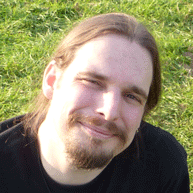
Martin Richardson
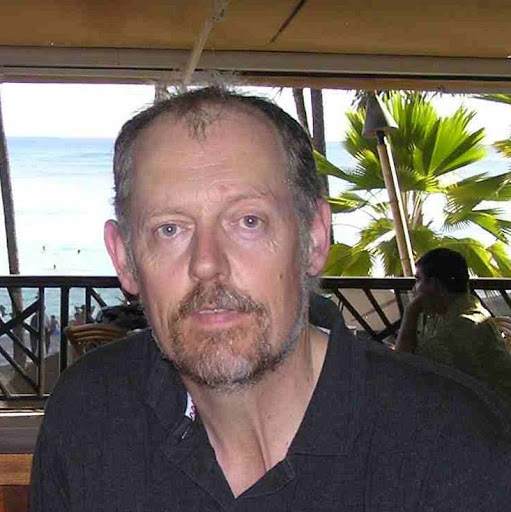
Martin Richardson

Martin Richardson
Tagline:
That guy
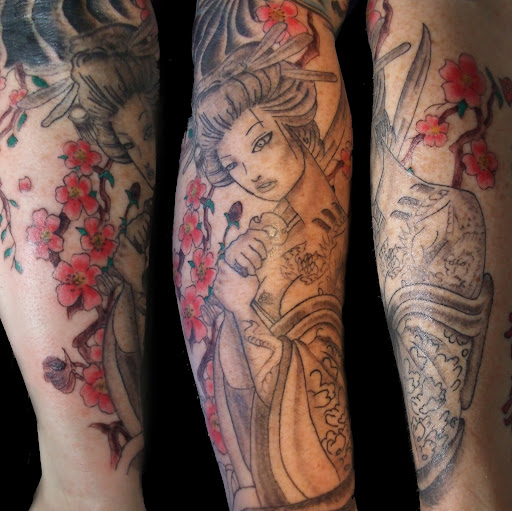
Martin Richardson
Tagline:
Twisted Tattoos

Martin Richardson

Martin Richardson
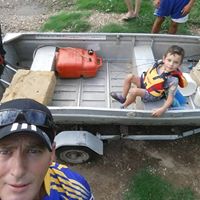
Martin Robert Richardson
view source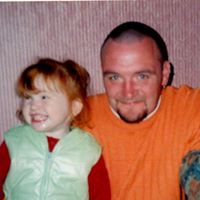
Martin Richardson
view source
Martin Richardson
view source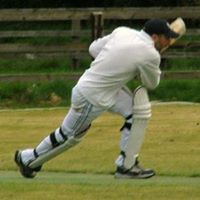
Martin Richardson
view source
Martin Richardson
view source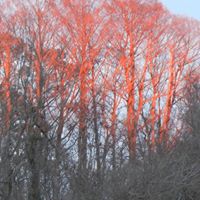
Martin Richardson
view source
Martin Wesley Richardson
view source
Martin James Richardson
view sourceYoutube
News

Harry Potter turns 20: JK Rowling's journey from penniless single mum to millionaire
view source- Once you start reading it, you enter a magical world, a world where you could be special, a world with clever things, with the idea that it all just might exist, Durham University education professor Martin Richardson told AFP.
- Date: Jun 25, 2017
- Category: Entertainment
- Source: Google

"Deathly Hallows" not the end for true Potter fans
view source- Martin Richardson, a professor at Durham University and one of the first in Britain to teach a Harry Potter college course, said it was unlikely that the series' sensational popularity would see an immediate drop-off after the final film.
- Date: Jul 05, 2011
- Category: Entertainment
- Source: Google
Get Report for Martin A Richardson from Omaha, NE, age ~57








